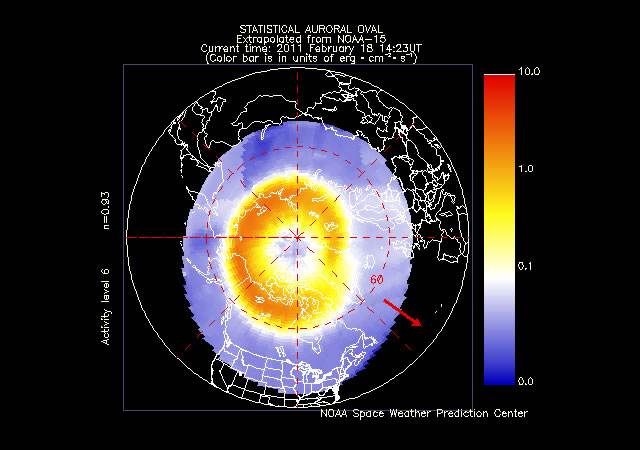A sunspot is an area of intense magnetic activity on the surface of the Sun (the photosphere) that causes it to decrease in temperature and darken.

One particular sunspot (imaginatively named “Active Region 1158”, shown above) has been growing in size over the past week and is now wider than the planet Jupiter. At 0156 on Tuesday morning an enormous X-class solar flare, the largest and most powerful type, erupted from AR1158. This was the Sun’s first X-class flare for more than four years.
 The X-class flare shown in an image taken by NASA’s Solar Dynamics Observatory at 193Å.
The X-class flare shown in an image taken by NASA’s Solar Dynamics Observatory at 193Å.
The flare was accompanied by a coronal mass ejection (CME), a plasma of highly energetic electrons and protons propelled outwards at great speed. This CME travelled towards Earth at about 900 kilometres per second and will strike the atmosphere at about 0100 on Friday morning.
Update (2011‑02‑18): the “blow” from the CME seems to have been fairly glancing and will therefore not impact as severely as thought. The solar wind speed on impact has been about 500-600 km/s, peaking at around 700 km/s for brief periods of time.
There is still the risk of further, less powerful, M-class flares from AR1158 in the future.
A CME is essentially a more powerful version of the solar wind. It is the collision of the solar wind and the Earth’s magnetic field that produces aurora (aurora borealis in the northern hemisphere and aurora australis in the southern hemisphere). It is possible, though unlikely, that the increased strength of the solar wind due to the CME from AR1158 will mean that the aurora borealis can be seen from the UK, especially at higher latitudes (e.g. the Hebrides or Shetland Islands) where the Earth’s magnetic field is stronger.
Update (2011‑02‑18): the current NOAA POES auroral oval clearly shows (top-right quadrant) that there is almost no chance of visible aurora anywhere in the UK.

Previously:
- What’s up with the Sun? on MrReid.org